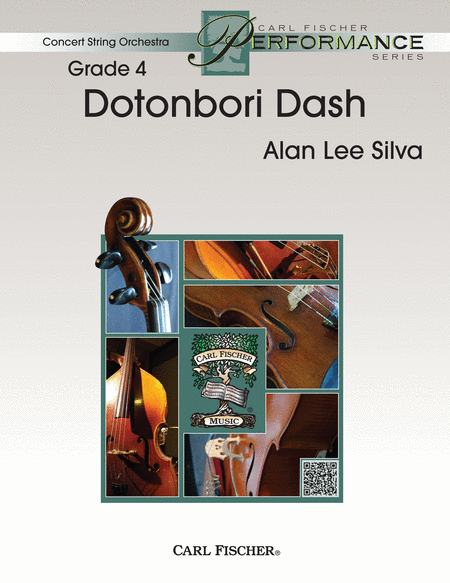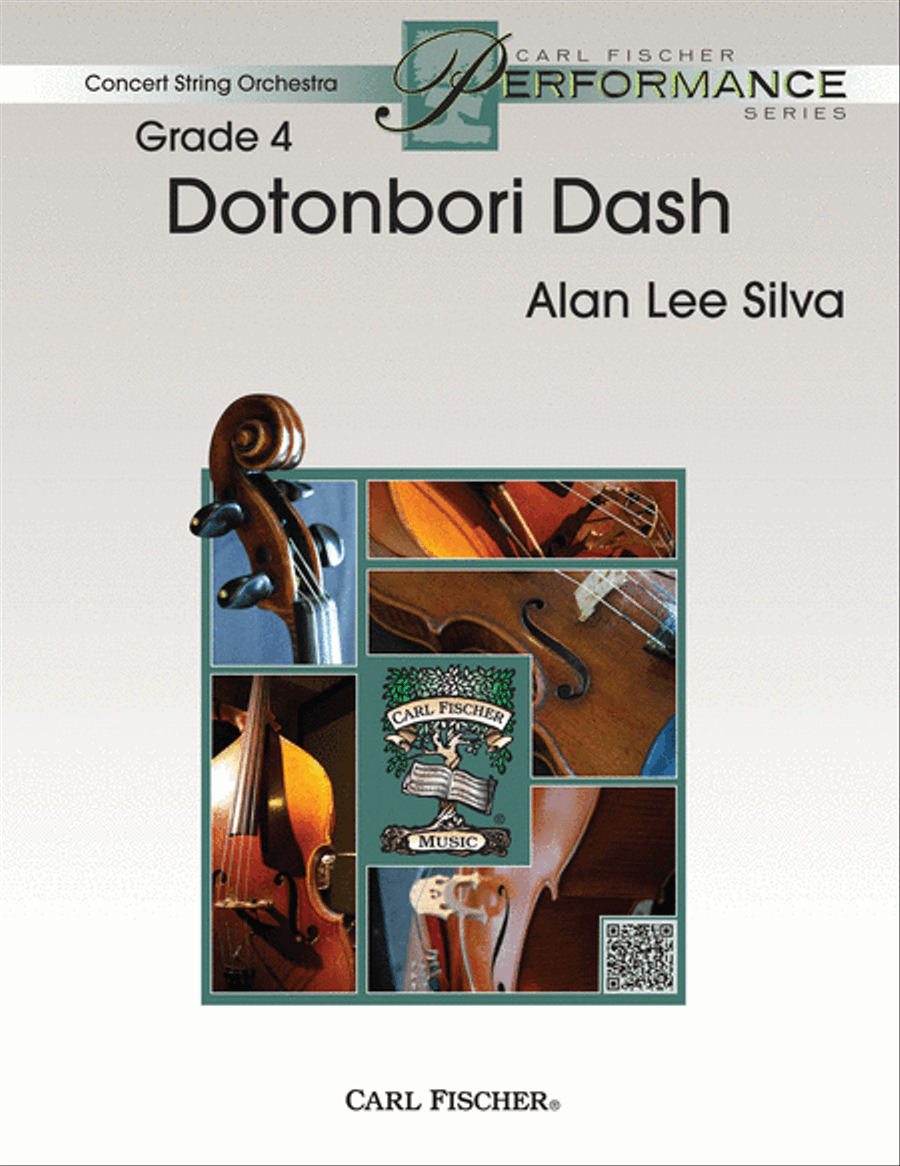 | By Alan Lee Silva. For string orchestra. Carl Fischer Concert String Orchestra Series. Grade 3 and up. Score and parts. Published by Carl Fischer Arr : String OrchestraPublisher : Carl Fischer $60.00 - See more - Buy online $60.00 - See more - Buy online
ISBN 9780825889448. 8.5 x 11 inches. Key: C major.
Dotonbori Dash is a tour-de-force for advancing string orchestras. It employs aspects of Japanese music and in certain parts, the lower strings emulate the sound of taiko drums. This work glides along smoothly in Alan Lee Silvaas usual style, but this has an extra dramatic flair to it. It is an exciting departure for this composer and one we are so very pleased to present to you.
Dotonbori Dash illustrates an adventurous chase through the Dotonbori Market, a lively and col- orful marketplace in Osaka, Japan. As the caper traverses in and out of doorways and through packed crowds, each section of the orchestra gets a prime opportunity to display their skills on either long, cascading melodies or contemporary bassline parts. The whole ensemble digs in from the start, playing aggressively. The themes throughout are written primarily using the A minor pentatonic scale. The opening statement in mm. 1-20 sets the scene for the (A) melody at m. 21 where the violins and violas carry the pentatonic melody, accompanied by percussive hits in the cellos and basses. The low strings have the option to play their parts in mm. 1-8 and mm. 51-58 col legno to create a percussive hit, emulating big Japanese Taiko drums. In m. 33 three elements are happening: 1. The cellos take over the melody. 2. The basses play a steady pizzicato bassline. 3. Violins and viola play pizzicato chord voicings. There is a slight tonal shift to the IV chord at m. 41 and the distribution of the three elements changes: 1. Violin I plays the melody. 2. Violin II plays double-stops and background lines. 3. Viola, cello and bass play bassline melodies. The opening statement of the piece recurs in mm. 50-58. At m. 59, the cellos carry the melody, accompanied by pizzicato figures in the rest of the orchestra. Measure 69 begins a quiet section with a graceful minor pentatonic violin solo at m. 77 over deli- cate pizzicato figures in the rest of the orchestra. A series of ascending scalar melodies begin at m. 116, preparing the final ensemble unison lines at m. 120 and the ending tutti, staccato hit. At m. 93 the piece begins to build again and is forte at m. 97 as a three-note motif is developed and spread around the ensemble. The scalar violin and viola melodies swell in mm. 100-101 and steer the piece back to the (A) theme at m. 102. Going to the V in mm. 110-115 as a pedal point in the cellos and basses, the full group is playing marcato stabs to build tension en route back to the I in m. 116. After a series of ascending scalar melodies the orchestra plays the final fiery phrase and tutti unison in mm. 120-121. |
|

 (AMERICAN COMPANY)
(AMERICAN COMPANY) 


